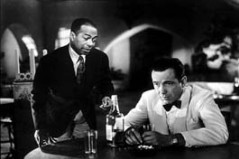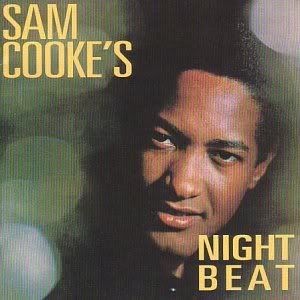The Underpaid
Traditionally, the relationship between teams and players was determined by the reserve clause. What is the reserve clause? Here's the final version of the language of it:
"... the Club may tender to the Player a contract for the term of that year by mailing the same to the Player. If prior to the March 1 next succeeding said January 15, the Player and the Club have not agreed upon the terms of such contract, then on or before 10 days after said March 1, the Club shall have the right ... to renew this contract for the period of one year."
Essentially, if the player and club couldn't come to an agreement on a fair contract by a certain date, the club could simply renew their old contract with the player. The clause said very clearly "one year" but the clubs took this to mean "in perpetuity" and the players took it because they didn't know any better. As long as the club tendered an offer, the player had little choice. He could go home to Alabama and raise chickens instead of taking the deal, but if he wanted to play major league baseball he had to take the team's offer.
Curt Flood was the first player to challenge the reserve clause, mostly because he didn't want to play for the crappy Phillies. He filed a lawsuit in the beginning of 1970 that ultimately went to the Supreme Court. His mistake, or his lawyer's mistake, was in arguing the case based on the antitrust exemption that baseball did (and still does) enjoy. They argued that the reserve clause depressed wages and ran counter to the public interest. The Supreme Court told him to go fuck himself, and Flood went back to baseball with his tail between his legs (eventually getting dealt to the Senators).
It was during the late-60's and early-70's that the MLB Player's Association, under the direction of Marvin Miller, finally woke up and realized that it was pretty damn powerful. The first player granted free agency was Catfish Hunter after the 1974 season - however, he only got out on a technicality. There was a clause in his contract stipulating that a certain amount of money was supposed to be paid into a life insurance fund. Stingy old bastard Charlie O. Finley failed to do this, and arbitrator Peter Seitz ruled the contract void - Hunter signed a lucrative free agent deal with the Yankees. Since this wasn't a situation that applied to most players, it was only a blip on the radar. But it showed the players just how much money was waiting for them if they had the courage to fight the owners on the reserve clause.
During the 1974 offseason, Dave McNally of the Expos and Andy Messersmith of the Dodgers refused to sign new contracts. Their respective teams offered them contracts under the 10 day deadline outlined in the reserve clause, and both played the season under that contract. After the season the two of them filed grievances to baseball's appointed arbitrator (Peter Seitz again) that they were only bound under that contract for the one year (the year they had just played) and were therefore free to sign anywhere they wanted. Seitz ruled that they were, and his decision was upheld on appeal. The free agent era had begun.
The owners, knowing they were beaten, did the only sensible thing, which was to sit down with the Union and work out terms of surrender. The result was the system that is now in place - teams have three years to move a player to the 40-man roster, and three years after that to option him to the minors. Once a player plays in the big leagues it starts his arbitration clock - the team gets three years to offer him contracts it deems fair, and the player either accepts them or stops being a professional baseball player. Over the next three years after that the player can go to arbitration where both the player and the club submit a figure, and an arbitrator picks one or the other. After this three-year period, the player is free to sign with any team. The team is of course always free to offer him a long-term contract (this is of course how the Indians built their 90's teams - by buying out their players' arbitration years and part of their free agency years, for more than arbitration money but less than free agent money).
So, after all that, I get to my original point. These underpaid lists are always full with pre-arbitration and pre-free agency players. They're underpaid because that is how the system is set up. Therefore, they shouldn't count as underpaid. Joe Mauer is one of the best players in the game right now, and he makes $400,000 dollars this year. But he cost the Twins a #1 overall draft pick and, more importantly, he is incapable of making more money. The Twins pay him $400,000, not because they're financial geniuses, but because they can.
So, here is my list of players who are actual bargains:
Ray Durham - $7M this year.
Has anyone noticed that Durham has an 891 OPS this year? Yeah, I hadn't either. This is the last year of his deal with the Giants, but he's making it count.
Scott Hatteberg - $750,000 this year (plus incentives). Signed through 2008 (club option).
The Moneyball star is getting on-base at a .396 clip and has thrown in 13 home runs.
Jermaine Dye - $5M this year and a $6M club option for 2007.
A legitimate MVP candidate.
Frank Thomas - $500,000, plus $2.6M in incentives.
Has given the A's basically his best-case scenario - healthy, and productive.
Carlos Guillen - $5M this year, and $5M next year.
Was never that productive as a Mariner (although he was serviceable), and has never been unproductive in his three seasons in a Tiger uniform. His OPS currently stands at 893.
Nick Johnson - $3.2M this year, $5.5M each of the next three years.
Technically Johnson's free agent clock hasn't started yet, but it will after this year and the Nats wisely locked him up through 2009.
Chris Carpenter - $5M this year, $7M in 2007 and an $8M club option in 2008.
2nd in the NL with a 2.96 ERA.
CC Sabathia - $7M this year, $8.75M in 2007, $9M in 2008.
Another player who doesn't hit free agency until after this season, but the Indians have him locked up through 2008. Sabathia is 26, sports a 3.22 ERA this season and has decreased his walk rate. He is worth much more than $7-9M on the open market.
And one player who I thought would be on this list but isn't:
Travis Hafner - $2.5M this year, $3.75M in 2007 and $4.5M in 2008 (club option)
Hafner is obviously grossly underpaid, but that's because he's only in his 5th season and therefore his free agent period doesn't begin until after next year. Since the club only has one free agent year locked up, I didn't count him.
(All the contract information comes from Cot's Baseball Contracts, a remarkable resource.)










































